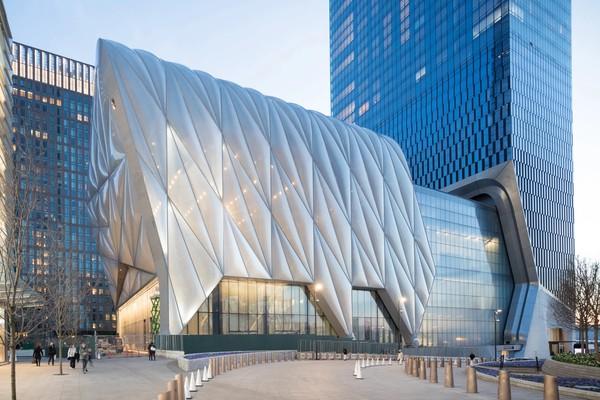

This slide depicts two works of architecture: The Shed by Diller Scofidio + Renfro (DSR), which opened in 2019, and the Reichstag Dome by Norman Foster, finalized in 1999. As can be seen, both buildings incorporate the elements of modernist architecture, such as the use of glass and steel, minimalism, and functionalism. The Reichstag dome was designed during the renovation process of the whole building. It aimed to use daylight as an architectural feature and implement efficient ventilation strategies, thus, bringing openness to the construction and optimizing energy consumption (“Reichstag, New German Parliament”).
Therefore, the concepts of sustainability and functionalism are reflected in this work of architecture. At the same time, the Shed, designed 20 years later, extends modernist ideas even further. Aiming to accommodate cultural events and large-scale performances, the building features a retractable shell able to provide “a 17,200-square-foot light-, sound-, and temperature-controlled hall” for exhibitions and installations (“The Shed”). Due to bogie wheels and rails, it can transform physically to provide creative space for artists with diverse ideas and accommodate the continuously evolving works of art.
The Reichstag cupola has become an established landmark of Berlin, symbolizing the rebirth of the German democratic process. The Reichstag dome appears futuristic with its double spiral staircase and mirrors used to reflect the natural light (“Reichstag, New German Parliament”). The Shed also embodies modernist ideas and utilizes glass and steel as primary materials to create a feeling of openness. However, the Shed’s utmost functionality and adaptability is undoubtedly an outstanding feature that takes modern architecture principles to a new level.
Discussion Question
What other buildings are unique or creative in their architectural decisions to support functionality?
Works Cited
“Reichstag, New German Parliament.” Foster + Partners. Web.
“The Shed.” Diller Scofidio + Renfro. 2021. Web.